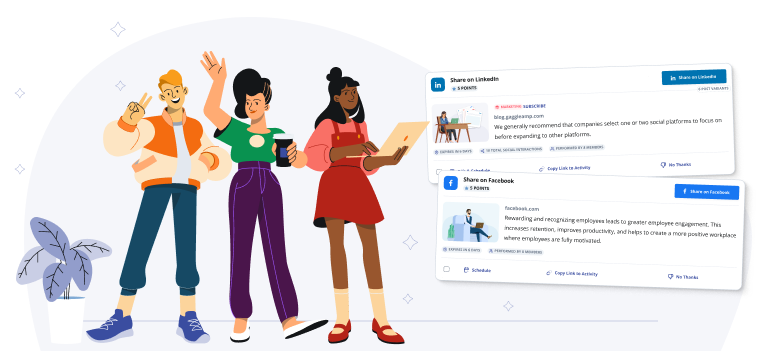The Future of Employee Engagement: What You Should Know
You already know how important employee engagement is and its role in your company’s revenue and growth. Do you know, however, what makes it work so well? Do you know what doesn’t?
Employee engagement best practices as an idea are nothing new, but the approaches to it have drastically changed in the last 30 years. Society has faced some radical changes, and most companies have, too.
The future of your business is tightly tied to the future of employee engagement. Now is the perfect time to learn how to adjust your employee engagement strategy to improve organizational performance within the modern workplace culture.
To do that, first, we need to hop into our (imagined) DeLorean for a little history lesson. Come on, I’ll drive.
What Companies in the Past Have Taught Us About Employee Engagement
Company culture from the 70s or the 80s hasn’t changed much with respect to employee engagement. Managers still use old methods for measuring employee activity that doesn’t (and didn’t) quite connect employees with their superiors.
But let’s not point fingers - a company’s internal communication was no better than a romantic relationship. You met, you dated, you married, you had children - you did everything that you were expected to do. The same happened with work: you went to work, you did your job, you went home. That was it. Wash, rinse, repeat.
If we’re being frank here, employment in the 70s and 80s was pretty different and employees often stayed at companies their entire working career. Back then, if surveys were done to explore employee satisfaction, the problem was they left it at that. They didn’t really know what to do with the findings. Employee feedback stayed just on paper because no specific actions were taken after getting the results.
For example, asking “Are you satisfied with working here?” led to no open-ended feedback for improving the employee experience. Annual employee engagement surveys didn’t really point to specific employee behavior or thoughts that would lead to specific outcomes.

Moreover, employee feedback was more often given by the less favorable employees a.k.a. the not engaged and the disengaged.
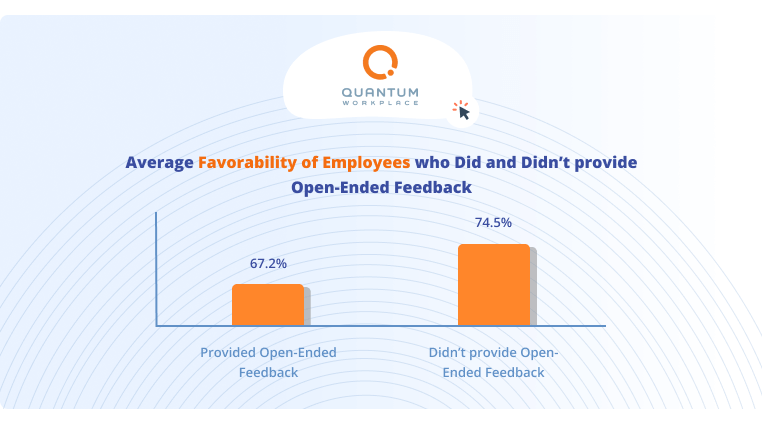 Source: Quantum Workplace
Source: Quantum Workplace
As a result, it was just a vicious circle from there: If the boss doesn’t care about me and my needs, why should I care about the company?
The problem was not in the idea that managers didn’t care - of course, they did. Just like the romantic partners cared. They just didn’t always know how to show it practically. It was because the everyday work-life challenges of the employee were not translated into the language the C-suites spoke. Those challenges were foreign territory to the leaders who had other headaches than their employees’ happiness to worry about.
What can we learn from this?
Your employees’ happiness is a priority you should worry about. Oxford University research has shown that happy workers are 13% more productive.
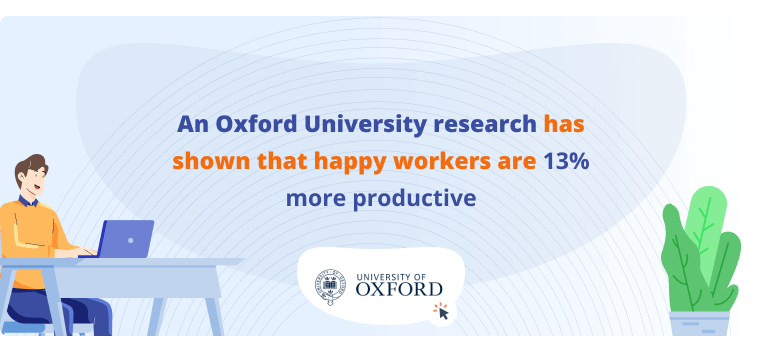 And these numbers play a crucial role on many levels: employee turnover costs, hours of time spent on recruiting new key talent, and levels of engagement, to name just a few.
And these numbers play a crucial role on many levels: employee turnover costs, hours of time spent on recruiting new key talent, and levels of engagement, to name just a few.
Fast forward to the present: employee communications and company culture today are very different. What does that mean for the future of employee engagement?
The Workforce and Employees of Today
This Is a Millennials’ World and It Wouldn’t Be Nothin’ Without a Perspective Shift
Those newer to the workforce are prone to expressing their beliefs, thoughts, and feelings. And this is a good thing. If you know more about them as employees, you’ll do a much better job in catering to their needs, thus increasing their motivation and engagement.
The millennials have completely revamped the vision behind workplace culture. They are much more vocal about what they need, regardless of whether they are the employee or the employer.
Feelings and personal opinions are now encouraged at work - a perspective that was almost unthinkable in prior work environments. Employees want business leaders to show them that they matter, that they belong, but most of all, that they are respected.
The Rise of the Digital Workplace
The new tides didn’t bring changes only in employees’ attitudes toward work. The appearance of the digital workplace has played another crucial role in the reinvention of the company cultures. With many businesses going remote due to the Covid-19 pandemic, forward-thinking companies adopted new practices to help everyone navigate past the pandemic, through “The Great Resignation,” and into the future of employee engagement.
For example, hybrid models of work have become the norm now. In many industries, it’s almost unimaginable for an employee not to have the opportunity to choose where to work from. And yet for those that have proven remote or hybrid can be done effectively during the pandemic, they’re forced to return to the office and are now finding new places to work.
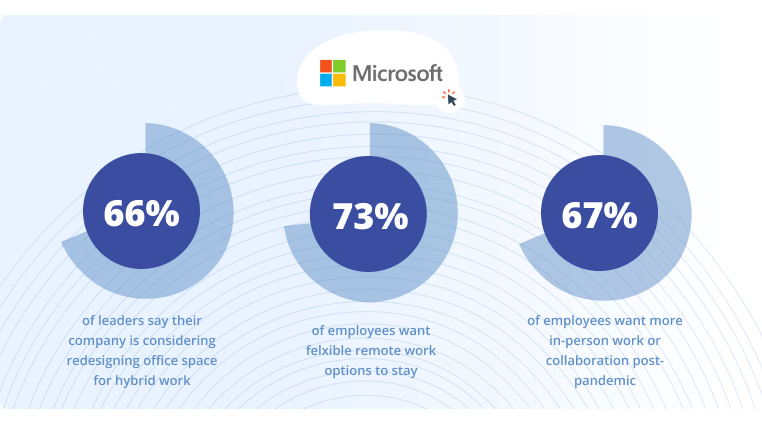 Source: Microsoft
Source: Microsoft
The same applies to having the right tools for getting the job done. If employees have to waste time on additional processes that can easily be replaced by a digital tool, it’s more likely they’ll want a new position where they won’t be bothered with such trivial matters.
So, What’s the Role of Digital Technology in Employee Engagement?
The greatest challenge for you, however, is keeping your employees connected while they work remotely. Statistics show that not having those chit-chats anymore makes employees feel more distant and inclined to disengagement. Luckily, social media has proven to be a great remedy for this, especially when combined with an employee engagement strategy.
Have you created a mindset that will help you define the new working and behavioral norms as part of your business models? Digital technology has already made many processes easier, what’s left now is for you to use it for a better dialogue with your employees. As GaggleAMP founder and CEO, Glenn Gaudet, says:
“At the end of the day, it’s engagement that builds relationships - not just the sharing of content.”
This is where you’ll best see the benefits of the employee engagement software. It will help you stay connected with your team and reduce employee isolation. Software like this helps boost internal communications, allows for employees to contribute social media content, and employ strategies for better social reach, all helping strengthen an employee’s share of voice.
The Future of Employee Engagement in the Workplace
In the end, the future of employee engagement relies on 2 things:
- Paying attention to employees’ needs and
- Incorporating employee advocacy software into your employee engagement strategy.
In order to get the best of the two and leverage your company’s growth and revenue, use these critical points as a template, or a roadmap if you will:
Accept the Fact That It’s the Age of the Employees, Not of the Employer
The power is in the numbers and in unity. We are witnessing staggering rates of people who are more than happy to leave their current jobs because they feel the company isn’t doing enough for them.
Another thing the pandemic has taught us is that there are alternative ways for people to earn money. Employers are just as easily replaceable as the employee. That’s why employees are far more encouraged to demand better working conditions than, say, employees from 30 years ago.
If you want to keep your employees on board and engaged, accept the fact that it is now the employees’ turn to change the economic tides.
Focus on Your Employees’ Personal Development
Your employees’ well-being, mental health, and personal development aren’t just a measure of how cool of a boss you can be. It’s absolutely critical for the business. If you have employees who are burnt out due to work, make no mistake that being engaged in your social marketing strategy is the last thing on their minds.
The same goes for their career stagnation. If your employee doesn’t feel like they can climb up the career ladder, they will lose their will to participate in any engagement activities you might have planned.
Make sure you create organizational awareness of employees’ personal development and spend time analyzing the current cultural trends to keep employees happy and engaged at work.
Introduce Remote or Hybrid Work
We’ve already seen that this is not only doable but preferable for both employees and employers. Statistics on remote work show that 74% of workers would stay in the company if provided the option to work remotely, while 16% of companies in the world have gone 100% remote.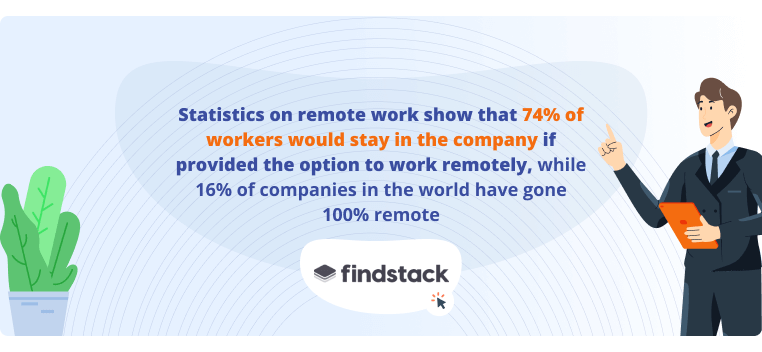 But for these business models to be successful, the first step you have to take is to create conditions for the best digital experiences - regardless of whether they are meant for internal communications or for social media engagement.
But for these business models to be successful, the first step you have to take is to create conditions for the best digital experiences - regardless of whether they are meant for internal communications or for social media engagement.
Be a Socially Responsible Company
People, especially millennials, want to work for companies that have a clearly defined stand on important issues. Studies show that millennials actually prefer a socially responsible company to a better salary.
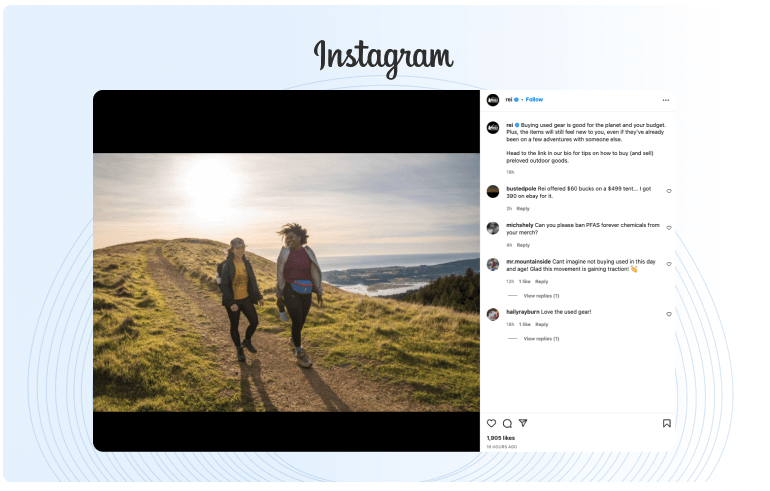
Conscious companies are forward-thinking companies. Being socially responsible can take many forms. Some organizations take on environmental commitments, like REI, and others partner with humanitarian organizations. Most of them fight social injustice and make public statements and promises about diversity, inclusion, and equity in general.
If your company creates a brand image that honestly cares about social issues, your employees will be your best advocates of that brand.
Use Employee Recognition Platforms
If you want a good customer experience, first you need to make sure your employee experience is even better. With the right digital platform, your team leaders will have no problems in creating an inspired workplace culture.
Meaningful communication, recognition, and awards for employees at all levels can be managed through just one platform. But it’s not enough to just shove the digital tool in their faces - they need to feel that the tool works for them, not the other way around.
Employee recognition platforms are a great way to show appreciation for the work and celebrate individual success. They not only inspire engagement but also help create a greater social reach.
Over to You, Boss
One thing you can bet on for sure in these turbulent times is that the future of employee engagement looks bright for flexible and forward-thinking companies. Leverage employee engagement tools, keep your employees well and thriving, and show genuine concern and care for their personal growth.
When you show your appreciation, you will get rewarded with loyalty, gratitude, and sustainable engagement.






